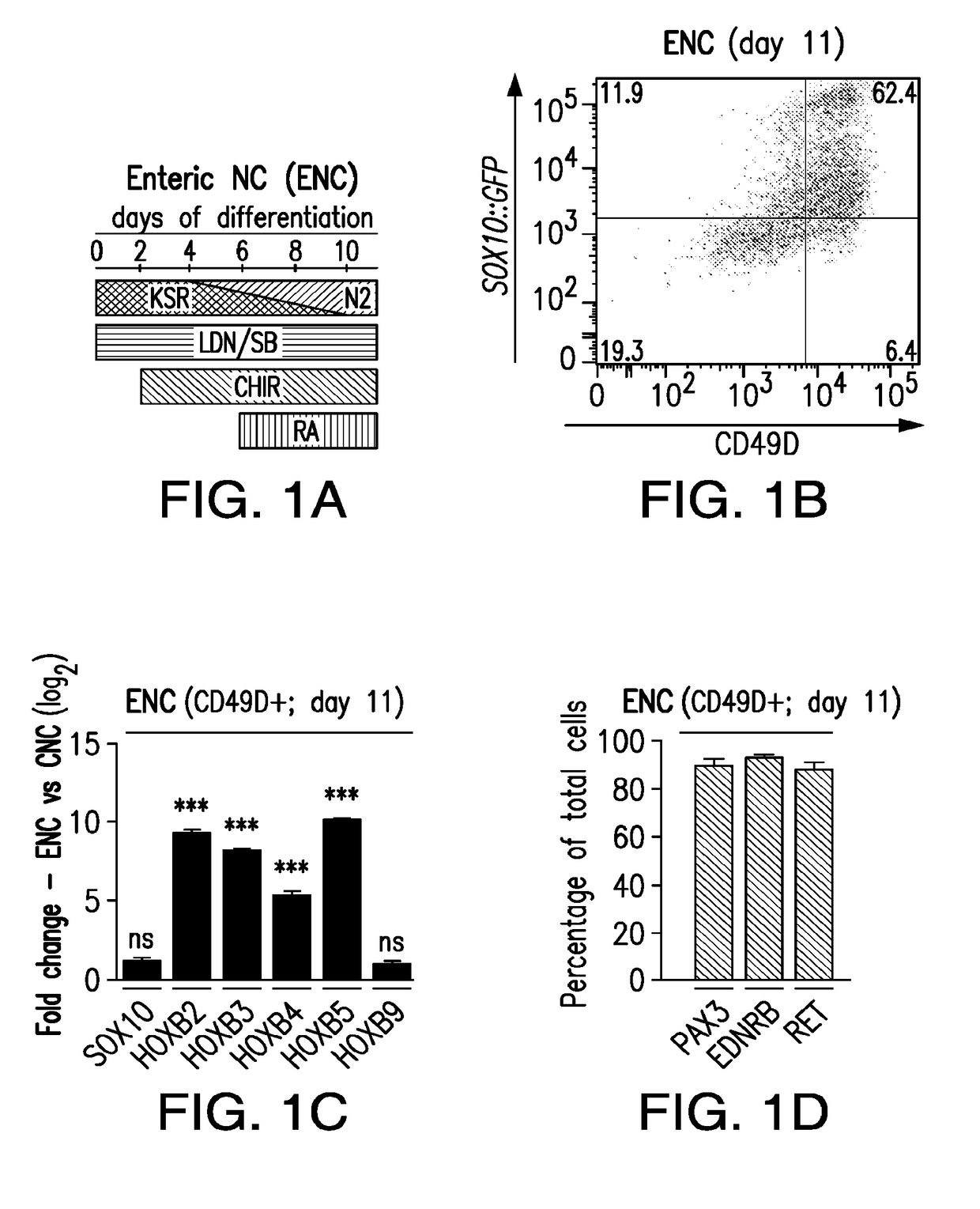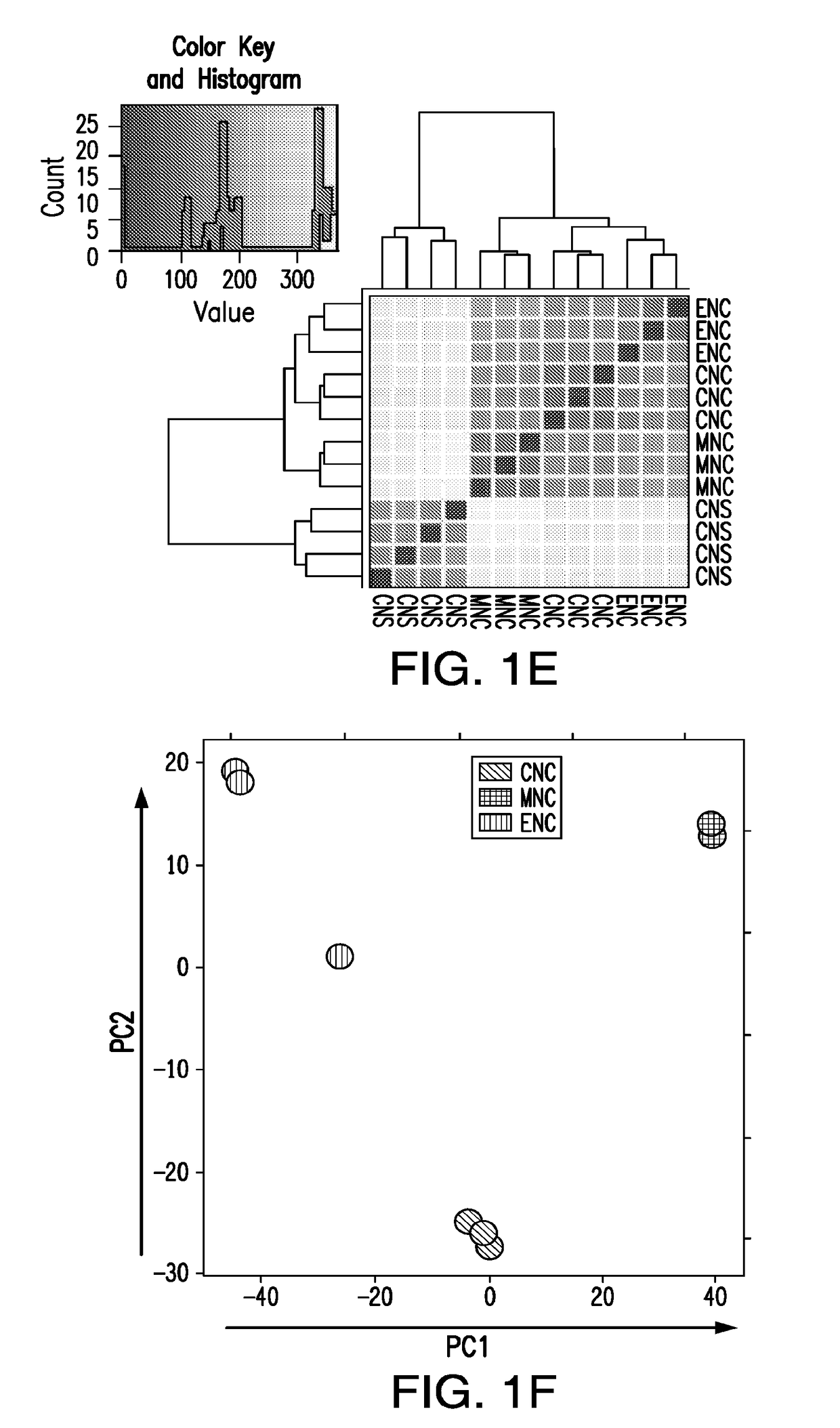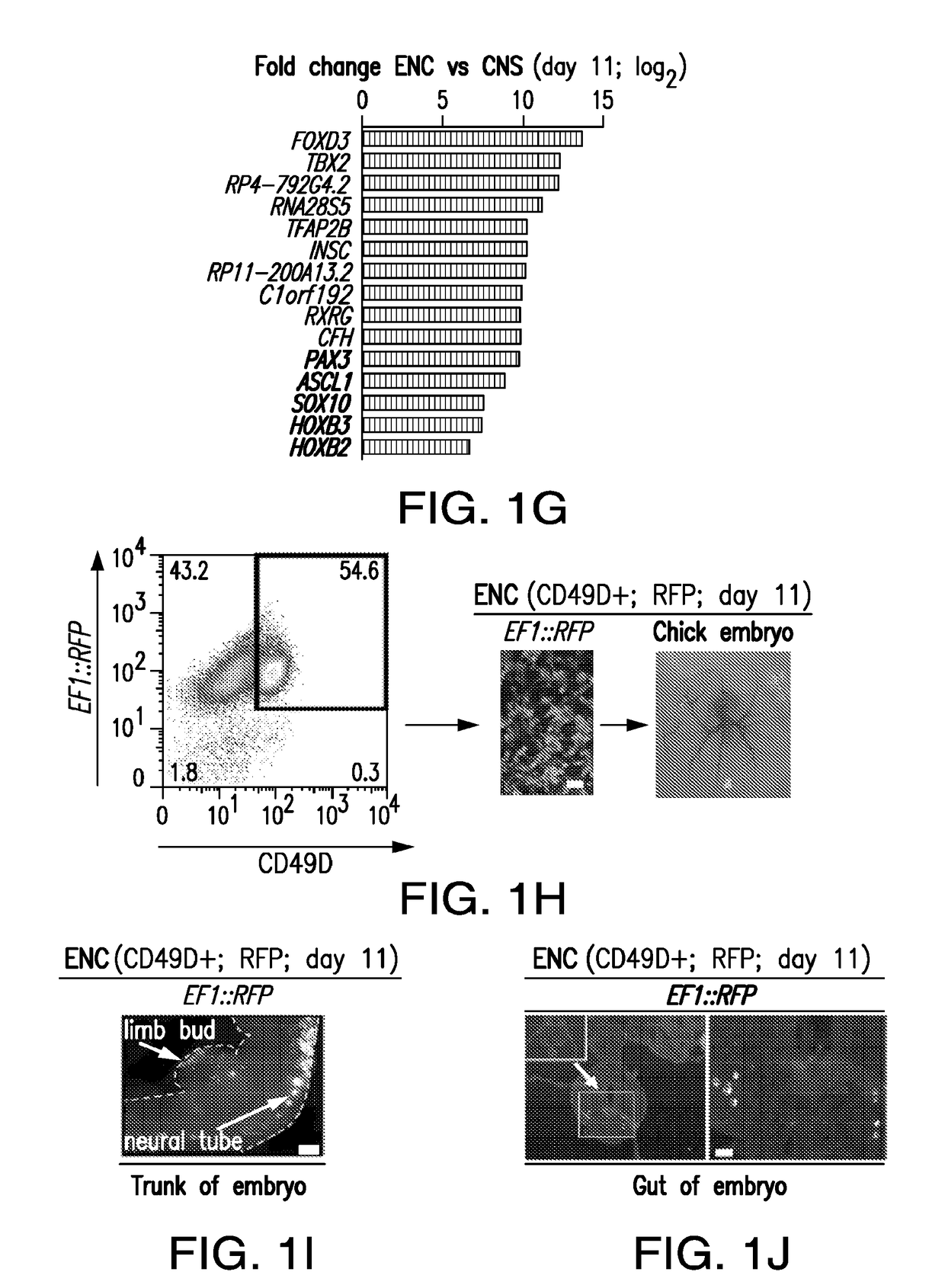Cell-based treatment and drug discovery in hirschsprung's disease enabled by pluripotent stem cell-derived human enteric neural crest lineages
a cell-based treatment and drug discovery technology, applied in the field of cell-based treatment and drug discovery in hirschsprung's disease enabled by pluripotent stem cell-derived human enteric neural crest lineages, can solve the problems of inability to derivate human ens lineages in vitro, and the development of human ens lineages remains poorly understood
- Summary
- Abstract
- Description
- Claims
- Application Information
AI Technical Summary
Benefits of technology
Problems solved by technology
Method used
Image
Examples
example 1
6.1 Example 1
Summary
[0434]The efficient derivation and isolation of ENS progenitors from human pluripotent stem cells (hPSCs) and their further differentiation into functional enteric neurons of diverse neurotransmitter phenotypes are demonstrated herein. In vitro derived ENS precursors showed an ability for targeted migration in the developing chick embryo and extensive colonization of the adult mouse colon as described below. Transplanted hPSC-derived ENS precursors migrated and engrafted in the colon of a mouse model of HD (EDNRBs-l / s-l) and triggered rescue from disease-related mortality. Finally, establishing EDNRB mutant ENS precursors enabled the modeling of HD-related migration defects and the identification of Pepstatin A and other BACE inhibitors as new candidate therapeutics. The studies described hereinestablished a hPSC-based platform for the study of human ENS development and reveals novel cell and drug-based strategies for the treatment of HD.
Methods
[0435]Differentiat...
PUM
| Property | Measurement | Unit |
|---|---|---|
| time | aaaaa | aaaaa |
| concentration | aaaaa | aaaaa |
| concentration | aaaaa | aaaaa |
Abstract
Description
Claims
Application Information
 Login to View More
Login to View More - R&D
- Intellectual Property
- Life Sciences
- Materials
- Tech Scout
- Unparalleled Data Quality
- Higher Quality Content
- 60% Fewer Hallucinations
Browse by: Latest US Patents, China's latest patents, Technical Efficacy Thesaurus, Application Domain, Technology Topic, Popular Technical Reports.
© 2025 PatSnap. All rights reserved.Legal|Privacy policy|Modern Slavery Act Transparency Statement|Sitemap|About US| Contact US: help@patsnap.com



